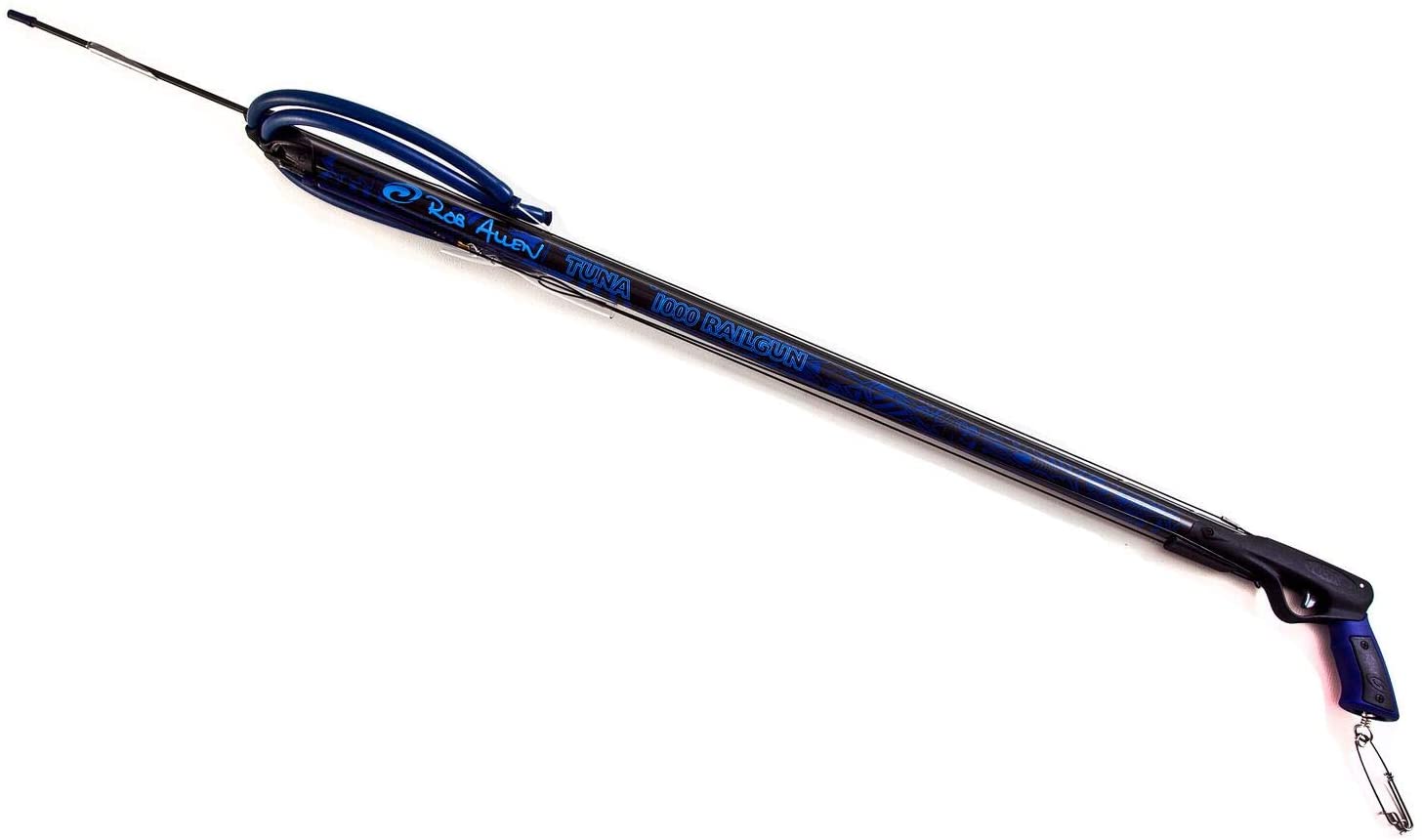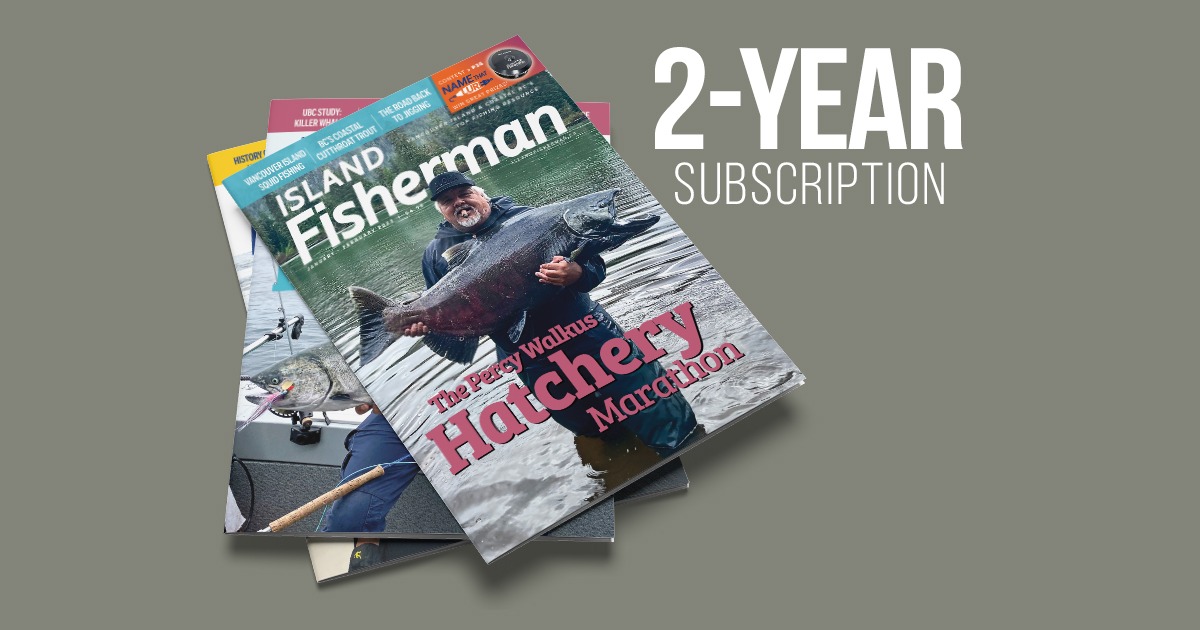
On fishless days, anglers almost always mention the natural beauty they witnessed, whether the mountains, the sunrises, or the wildlife—as if nature is the consolation prize for a day of “almosts.”
This natural beauty extends beneath the liquid curtain to reveal an ethereal realm all to its own. BC’s coastal waters teem with a diverse range of corals, anemones, octopuses, other invertebrates, and of course, fish. Local aquatic environments like kelp forests are some of the most productive and rich ecosystems on the planet, and they provide shelter to millions of marine species. Unsurprisingly, the sport of freedive spearfishing has grown in recent years, as so much beauty can be captured all in one breath of air.
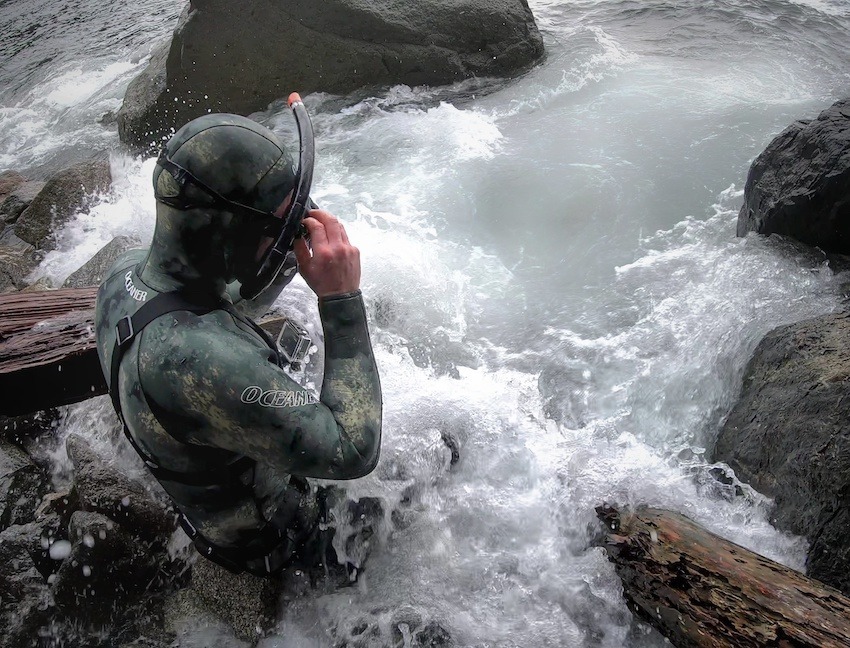
Marko Lubonic entering the water
The sounds of the surface fade as you descend, and the beat of your heart and the chorus of the ocean take over. Water augments and distorts the sounds of the ocean. Everything melts away as you enter into an environment that demands sharp focus on your surroundings and on one of the most important yet most basic things—the breath.
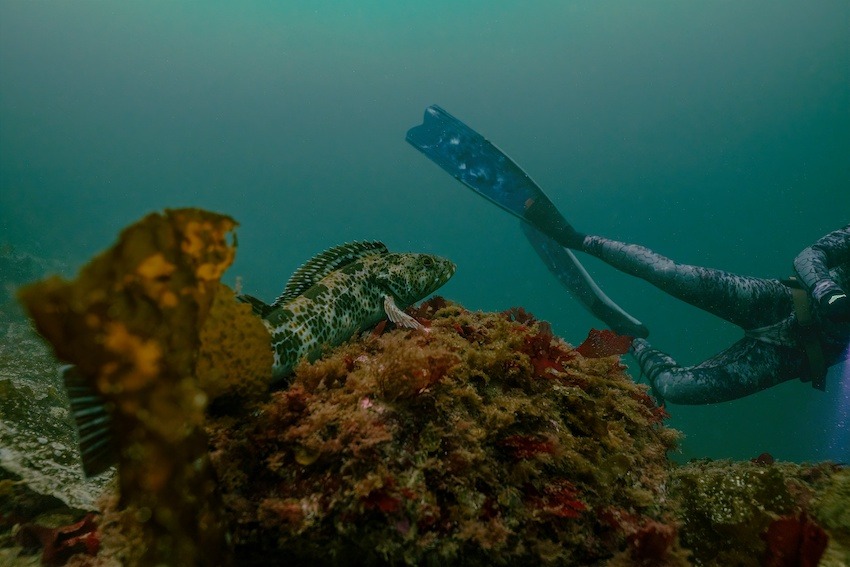
Lingcod resting on a rock
Your lungs are not like bone, in the sense they do not reach a point of maximum growth. Rather, they grow to meet the demands of the breather. This means almost everyone has the capacity to expand their lungs and hold their breath for an inordinate length of time. In just one month, while lying down, people have been able to increase breath holding to five minutes. Perhaps this may sound far-fetched, but with proper training and persistence this benchmark is attainable. Many divers describe their experience as tranquil, meditative, and even spiritual, as their connection to food and the aquatic environment becomes more intimate and profound.
To freedive is to embark on a fantastic and satisfying journey. People like Marko Lubonic—better known as Marko Spearo—can’t say enough about it.

Marko Lubonic—better known as Marko Spearo
The great richness of BC marine life enables some world-renowned spearfishing and freediving experiences that Marko has captured throughout his underwater career. Now a freediving and spearfishing instructor, he started freediving in 2018 with a 5 mm wetsuit and an urge to collect Dungeness crab in tidal zones, but little did he know this initial effort would make such a large impact in his life. When he began, Marko didn’t really have an idea how to free dive. He started with an improper scuba mask and set of small, rigid fins, but it was more than enough for him to become familiar with water conditions and to experience the ocean’s bounty. Soon, freediving and spearfishing content on YouTube became Marko’s most valuable resource.

A good day’s bounty
But, as they say, safety comes first, and after having a close call with a spear, I can vouch for its importance. There are so many things to be aware of in the ocean, so before you bring a speargun into the equation, become confident in everything else about diving. There are freediving and spearfishing courses that teach rescue procedures, breath- holding techniques, underwater etiquette, speargun use, etc. Freediving and spearfishing courses are paramount to creating safe environments for enthusiasts, and the event spreads awareness to ranges of water users—including boaters who may not be aware of divers in the water. Blacking out underwater is a very serious concern, so rule number one is never dive alone. This is the main reason Marko created the Facebook group “BC Spearfishing and Freediving,” which at its conception had 6 members but now boasts more than 3,000. The online community provides a wealth of information as members freely give opinions on any and all queries that a BC spearfisher or freediver might ask.
For the depths he dives, Marko has replaced that first 5-mm summer wetsuit with a 7- to 9-mm, 2-piece open-cell wetsuit, specifically made for spearfishing. The rubbery inside sticks to your body, preventing a layer of water building up between the suit and your skin. Marko also has a 2-mm vest on his torso, and says he can stay in the water for 2 hours in the winter and not get cold. In addition to the suit, he also uses 5- to 7-mm gloves and boots, plus long and efficient freediving fins that help keep movement to a minimum and heart rates low, as fewer heart beats equals better air efficiency. The ineffective mask changed to a low volume black one, as a smaller mask conserves more air and black prevents light reflections that obscure your vision. One goal in freediving is to be neutrally buoyant— neither sinking nor floating. If you have ever been in a wetsuit, you know how buoyant they are, and lead weight belts are paramount to underwater maneuverability. The weight level on belts, typically around 7 to 9 kg, will vary based on the water salinity, wetsuit thickness, experience level, body composition, and planned dive depth.
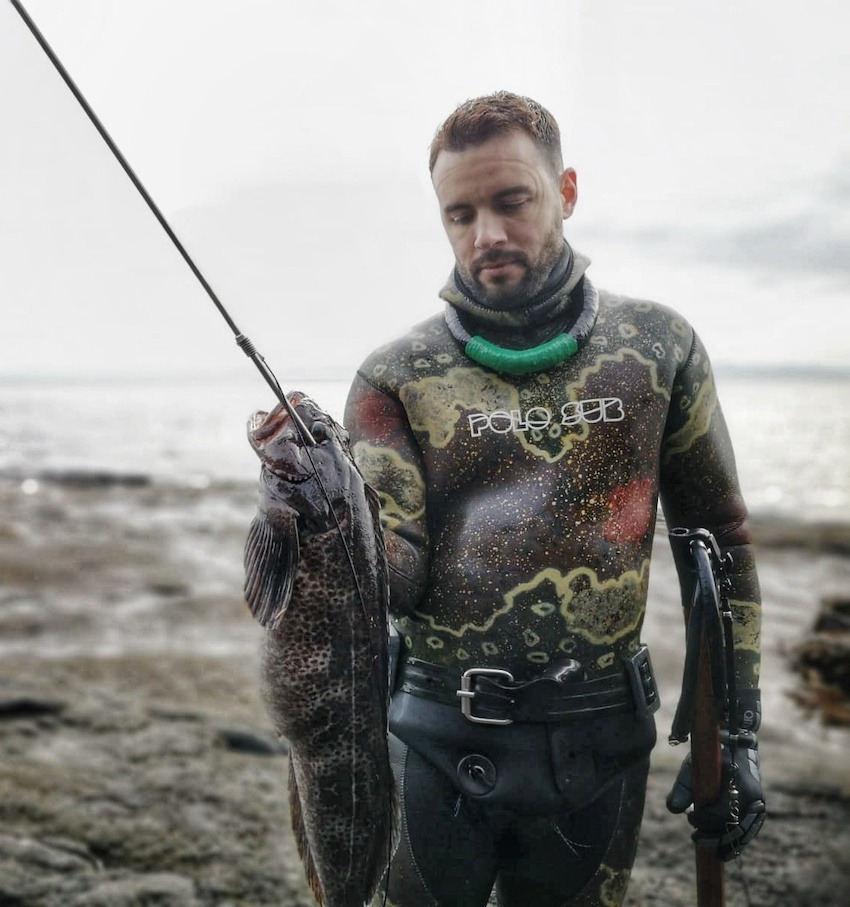
Spearfishing Suit
Spearfishing Gear
To return to safety concerns, a knife strapped to a calf or bicep is also a useful tool to prevent becoming tangled underwater by kelp or crab traps and can be used for other tasks, such as fish dispatching. Another important aspect is the dive buoy—a red, 20-litre inflatable buoy that divers attach to themselves or to an anchor in the area where they are going to dive. This buoy alerts boaters that divers are in the water. It is also useful for attaching your water bottle, flashlight, or a catch bag for your crabs, mussels, oysters, and other tidbits. Visibility can be an issue in the spring and summer months, when plankton multiply in the abundant sunshine. A dive rope from a buoy anchored to the bottom may then prove essential for finding your way through the first couple metres of water (where plankton bloom) to beneath them, where you can see up to 90′ on a good day and 5′ to 10′ on a bad day. Wielding a spear pole or especially a lengthy speargun underwater presents maneuverability challenges, so achieving total comfort in all conditions before bringing a speargun with you is vital to shooting accuracy.
After you build confidence, spearguns can provide the next exciting step for the freediver. For entry level spearfishers, basic pole spears (around $70) are perfect, and are essentially a spear attached to an elastic cord used to sling the spear the target. The speargun is more common, and has an elastic cord (or cords) attached to a tethered spear that is roughly 75 cm for BC waters, as getting into crevices and holes is easier with a shorter gun.
What Can You Spearfish in Coastal BC For?
As it stands, the following species are off limits for spearfishing: salmon, perch, sculpin (cabezon), herring, eulachon, mackerel, anchovy, Pacific sand lance, sardine, smelt, sablefish, skate, sturgeon, trout, and wolf eel. Of the inshore and groundfish species to target, lingcod are at the top of the pyramid, with other species like rockfish, kelp greenling, etc. forming the base. If you have the chance to spearfish for tuna and halibut, those definitely would be top-tier species.
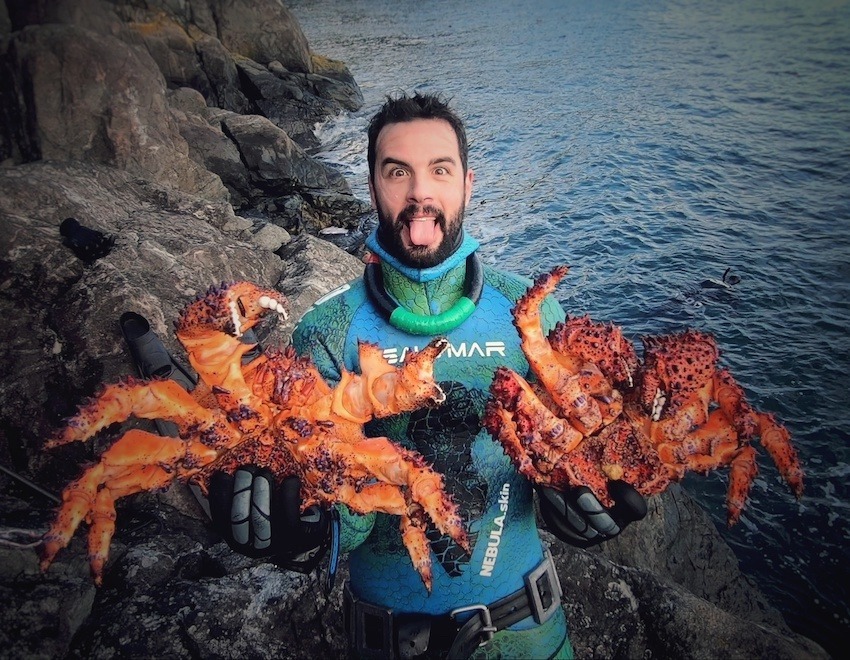
Spearfishing and Sustainability—The Big Picture
Spearfishing is a more sustainable approach to fish harvesting than line fishing, as you literally see, point at, and shoot the fish instead of being blind to what bites—which could be a species out of season, a juvenile or breeding female, or even the dreaded dogfish. Spearfishing allows you to be highly selective and avoid certain fish or invertebrates. If you reach your limit for the day or have yet to acquire a spear, then foraging for sea urchins (very high in iron), crabs (Dungeness, red rock, king), sea cucumbers, gooseneck barnacles, mussels, and other food targets is highly rewarding. Be sure to take only what you need from areas that can support retention habits, so everyone can continue to enjoy this amazing aquatic activity.
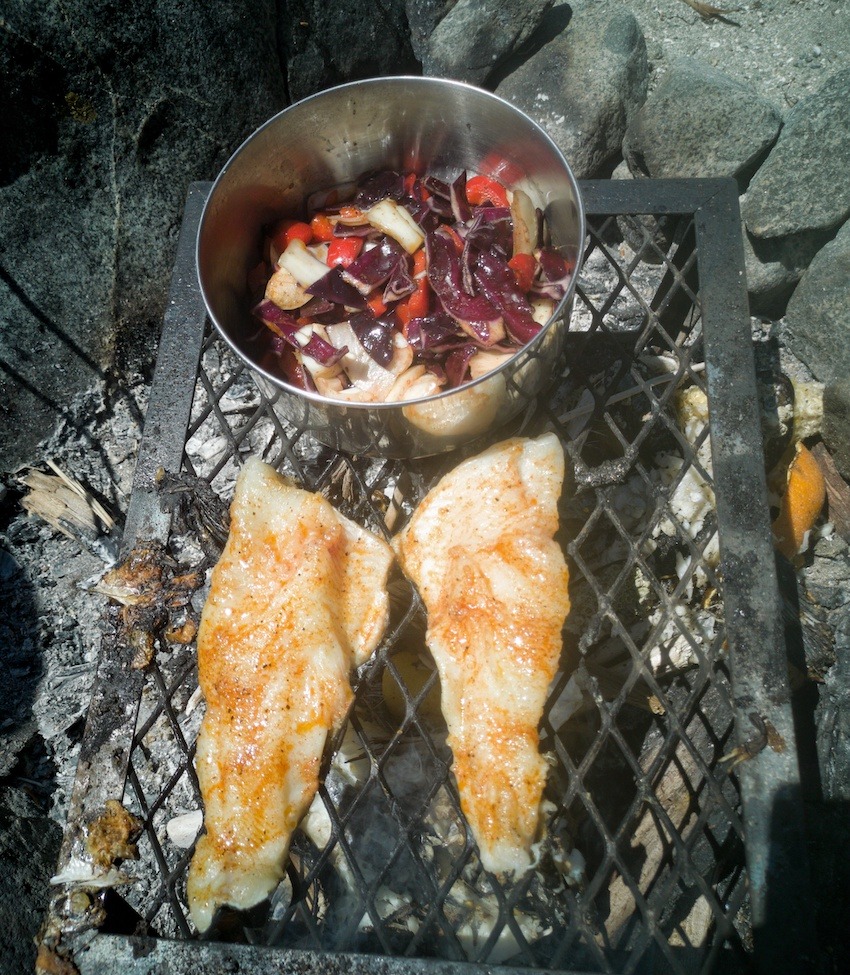
This article appeared in Island Fisherman magazine. Never miss another issue—subscribe today!
Visit the Store
$34.99
$34.99
Featured Catch

Joel Unickow halibut (Photo: Rob Frawley Lucky Strike Sportfishing Tofino)
